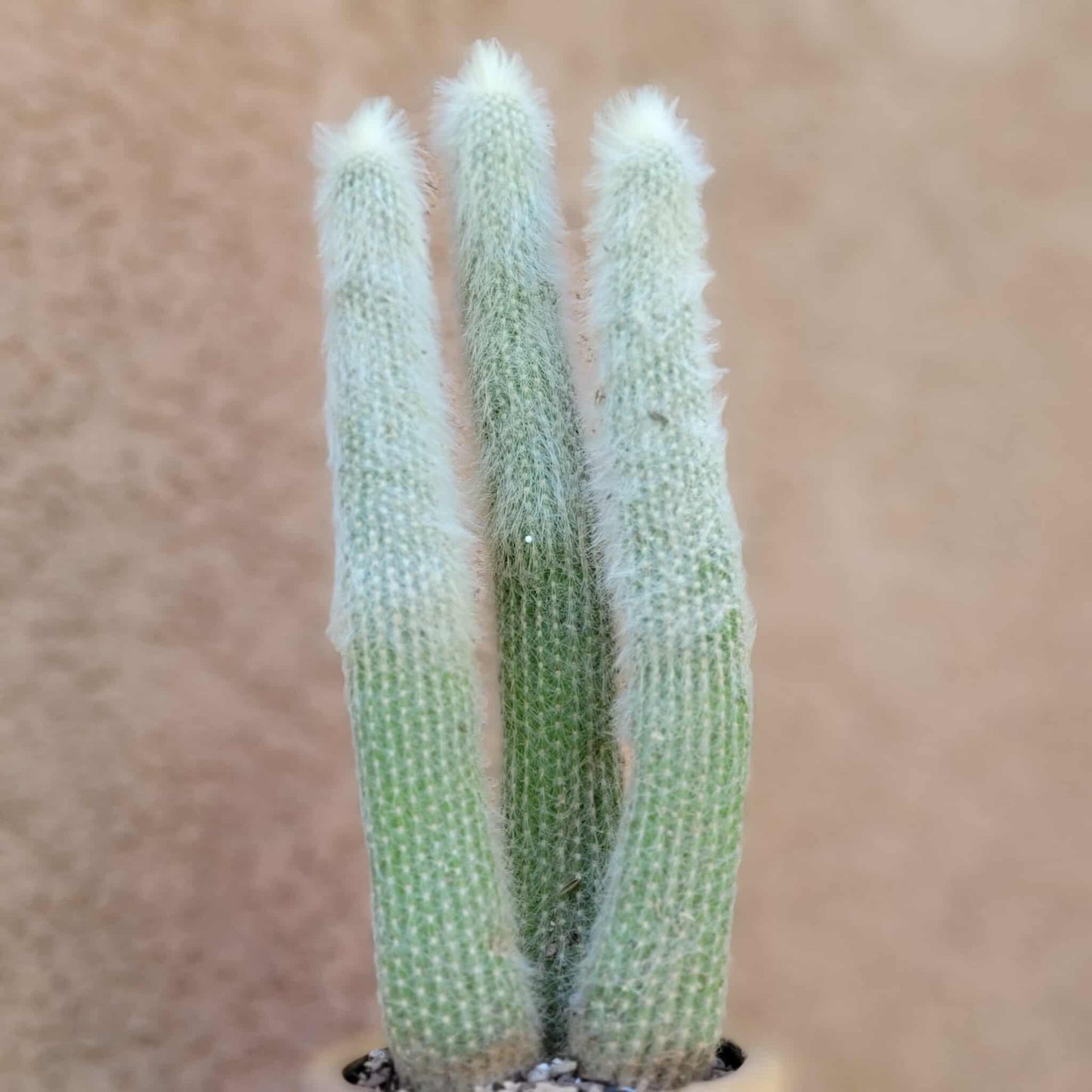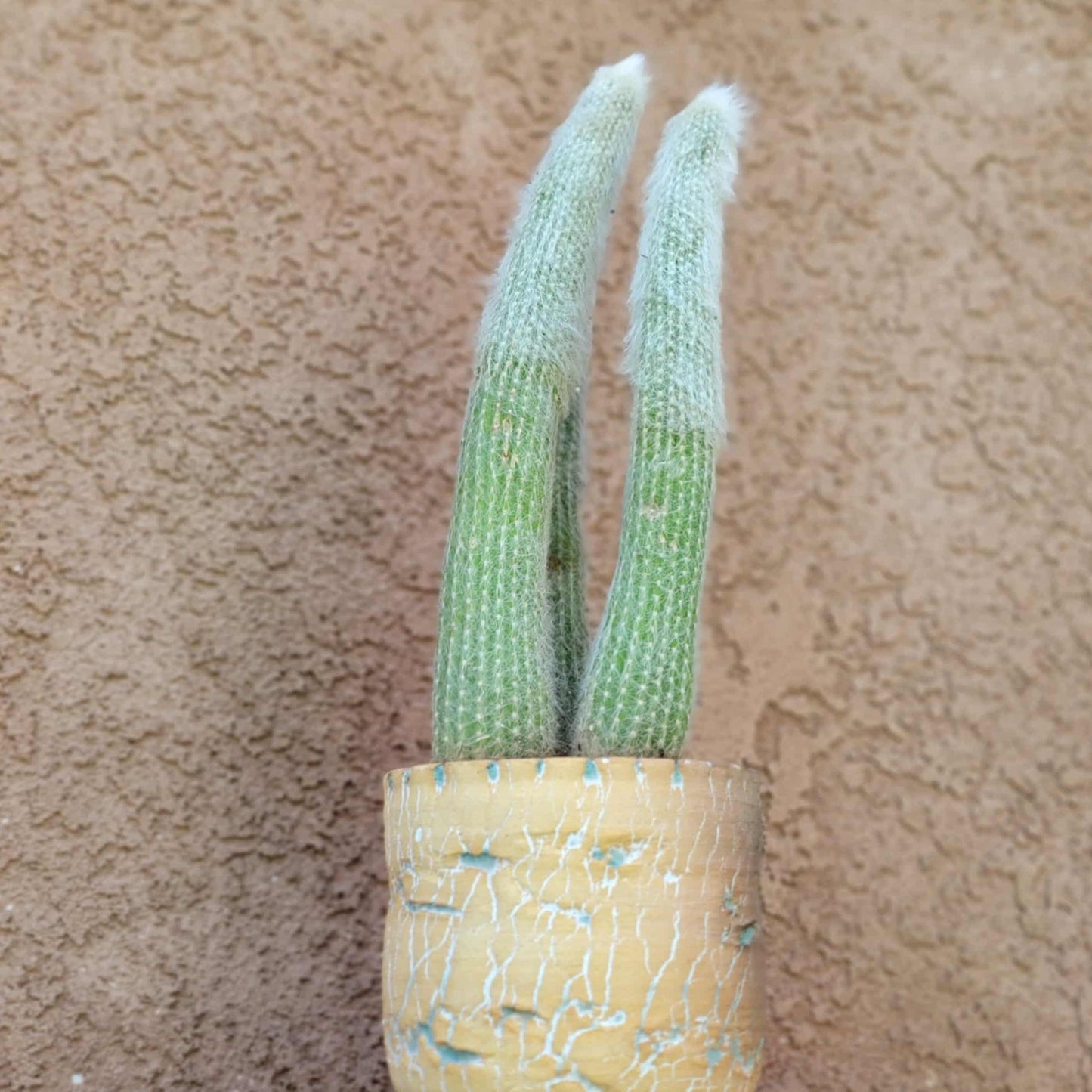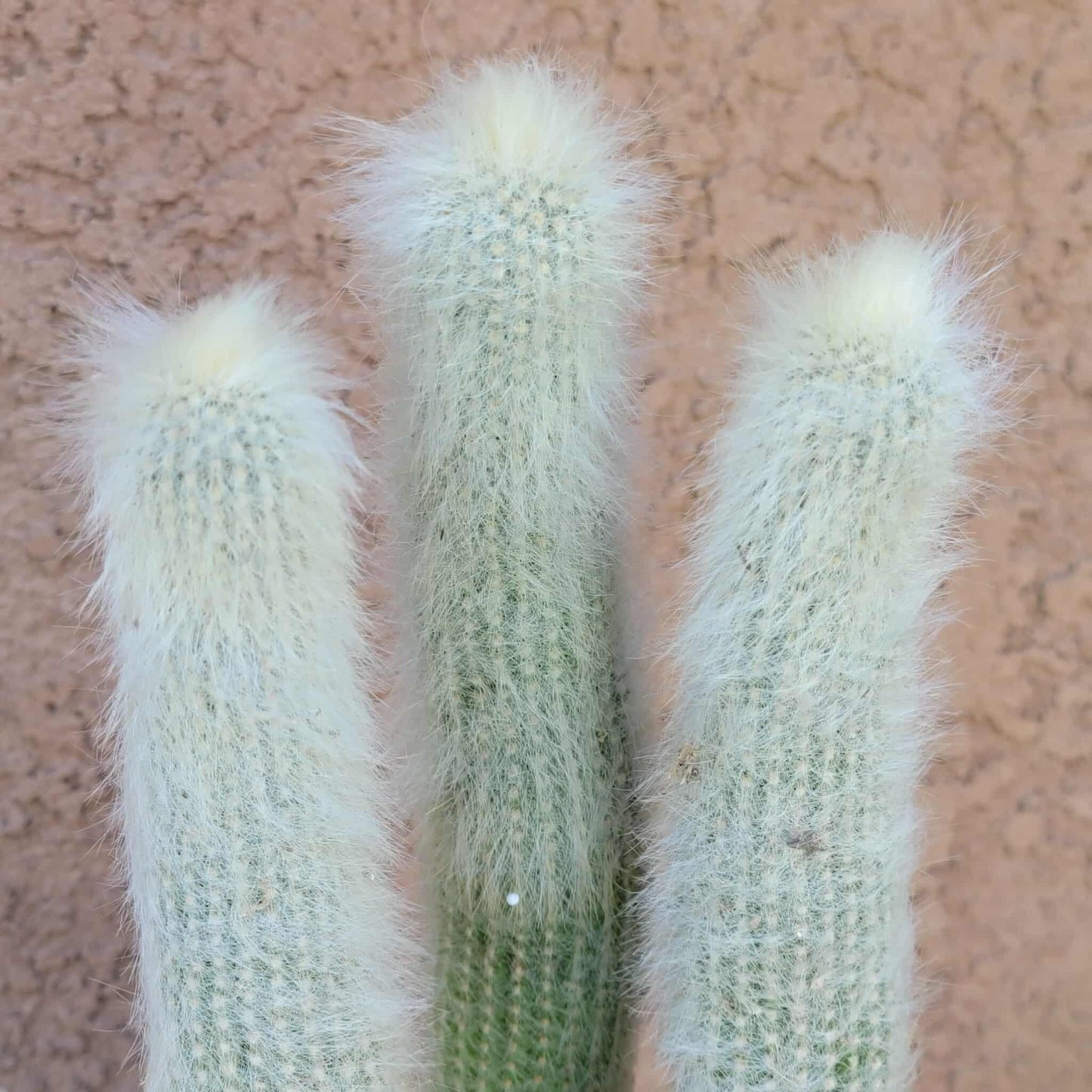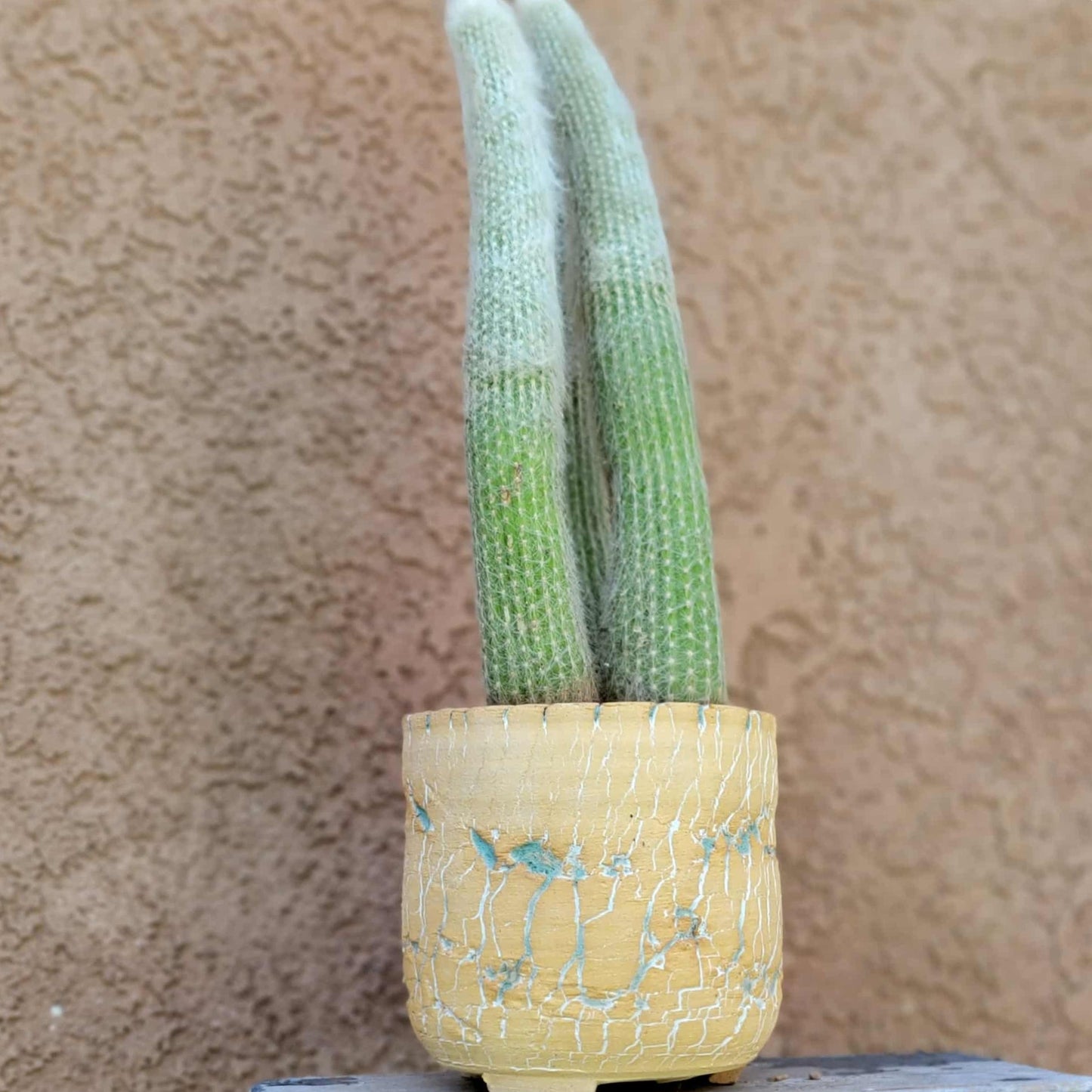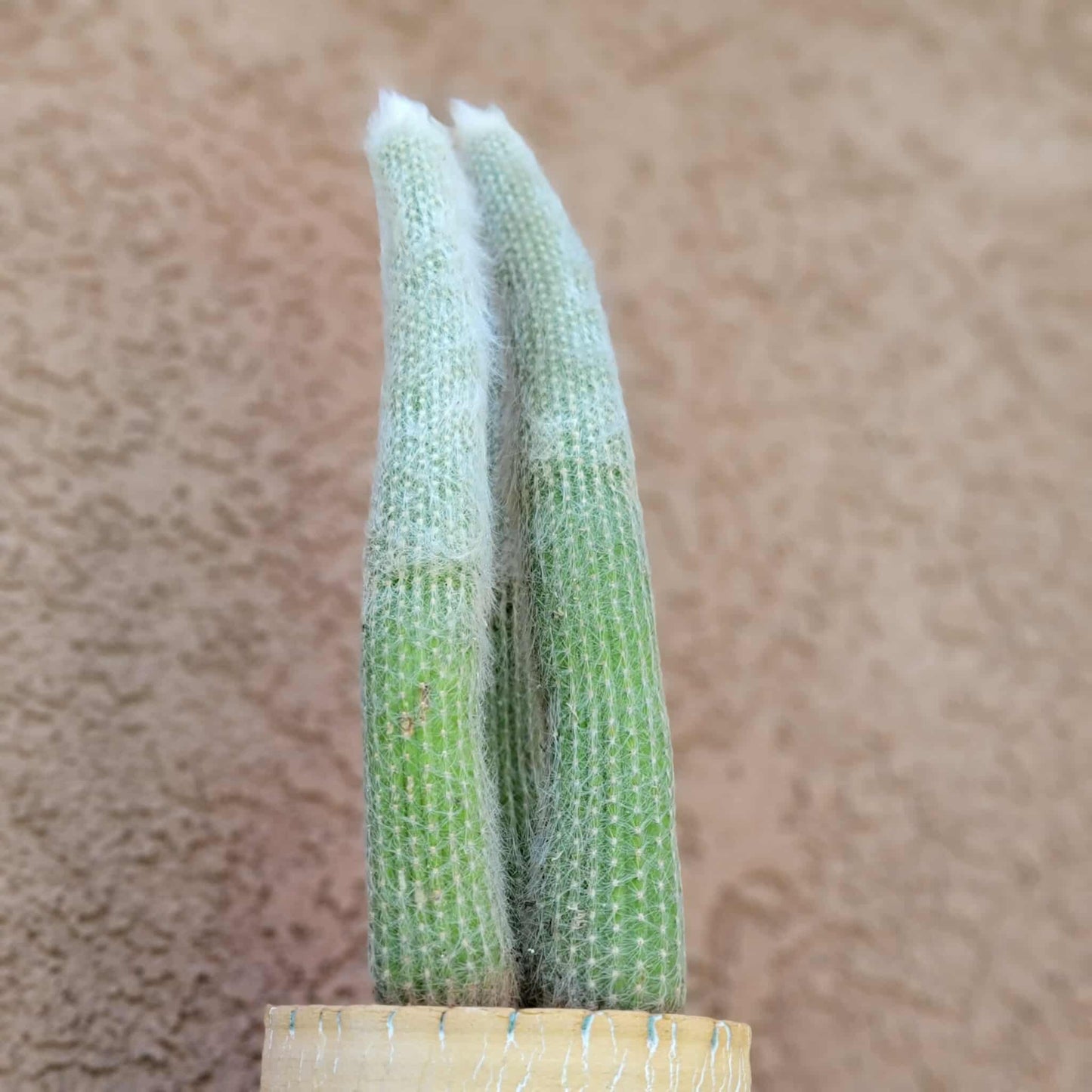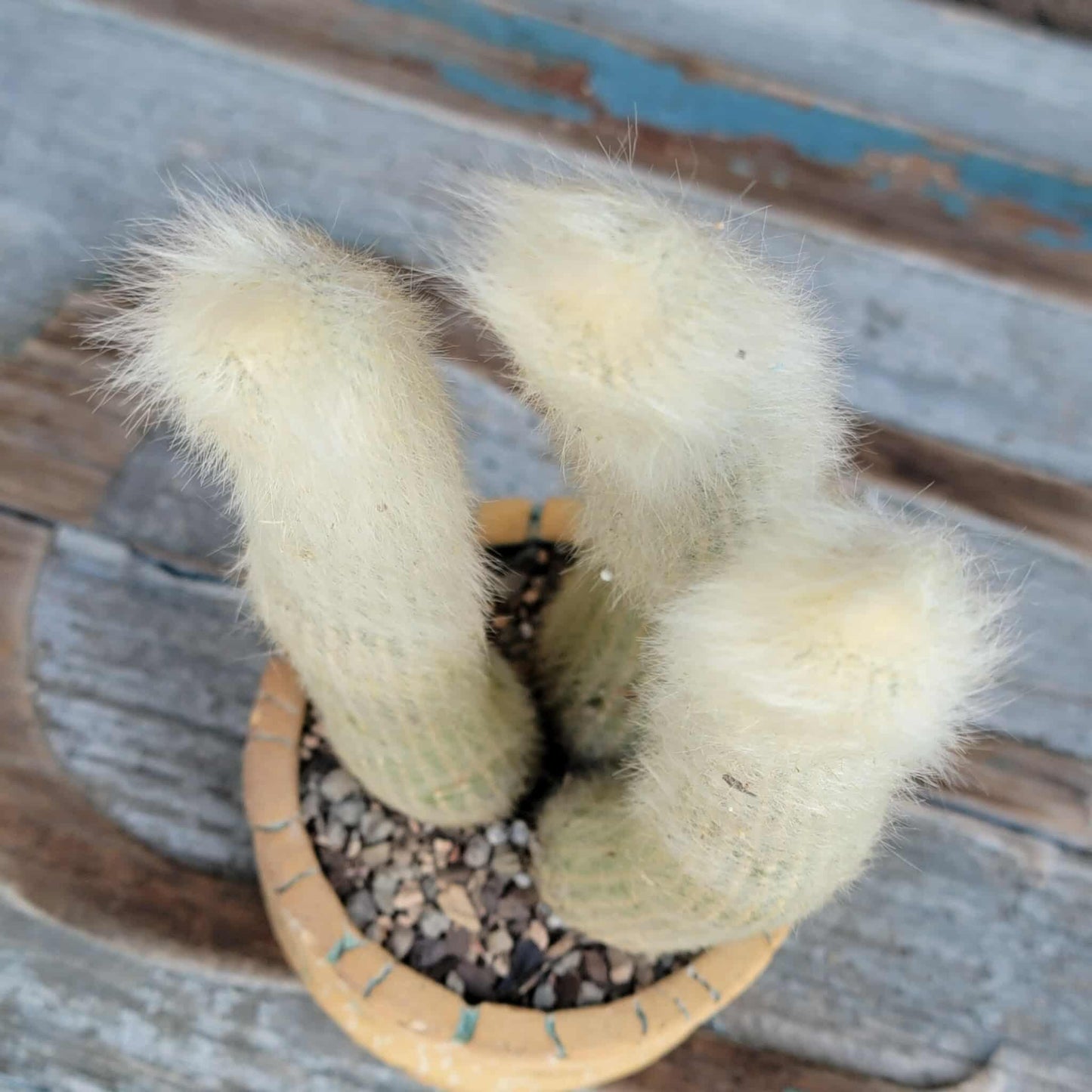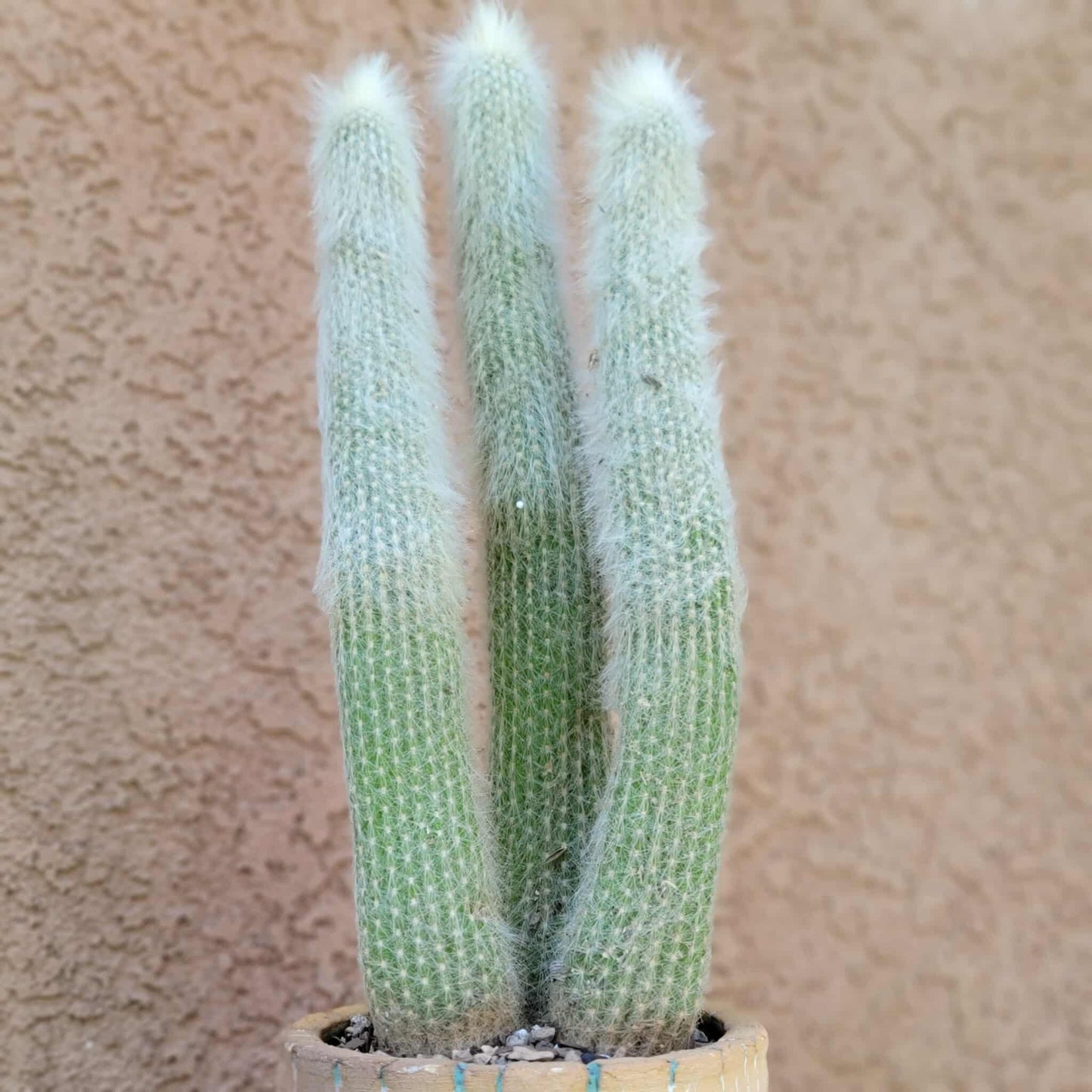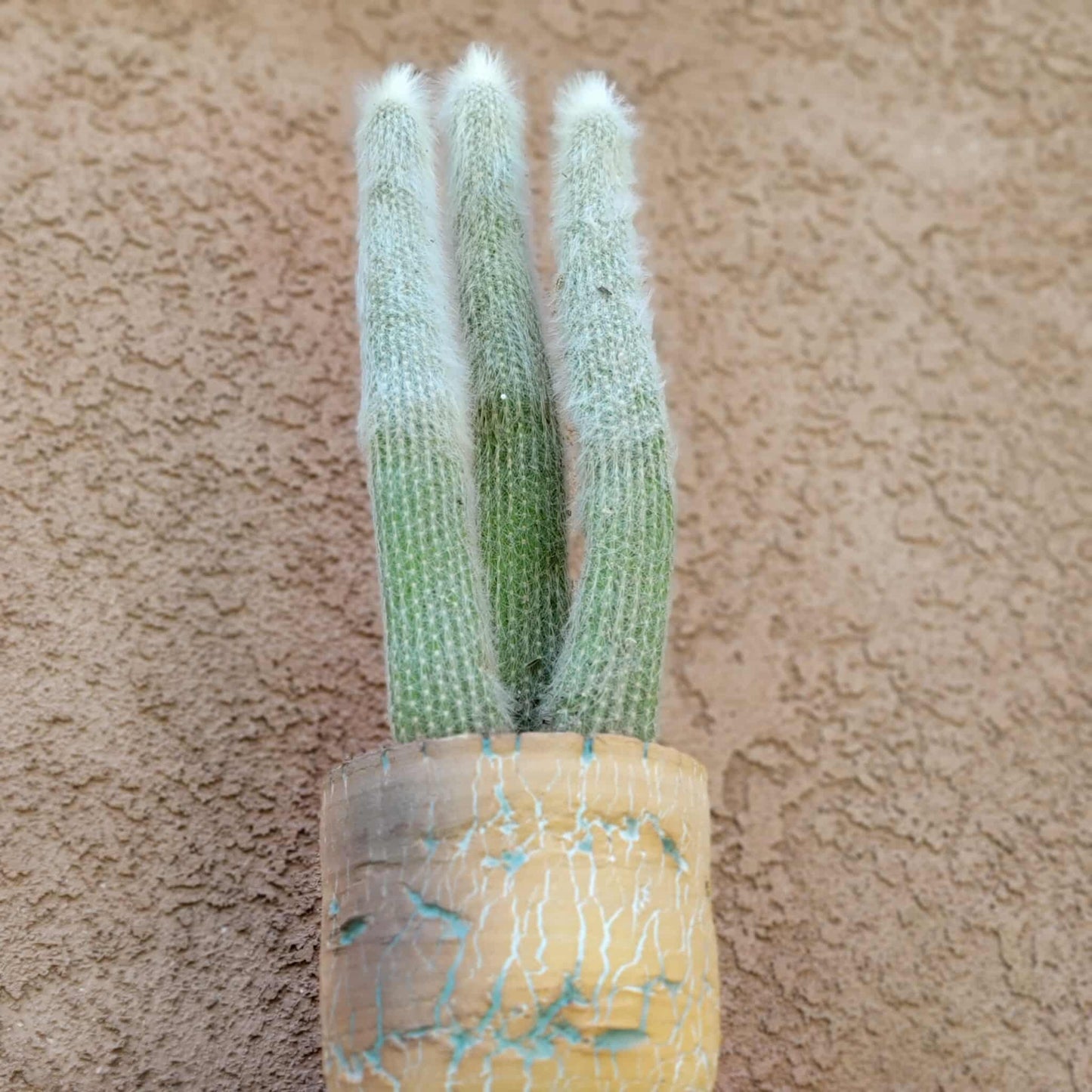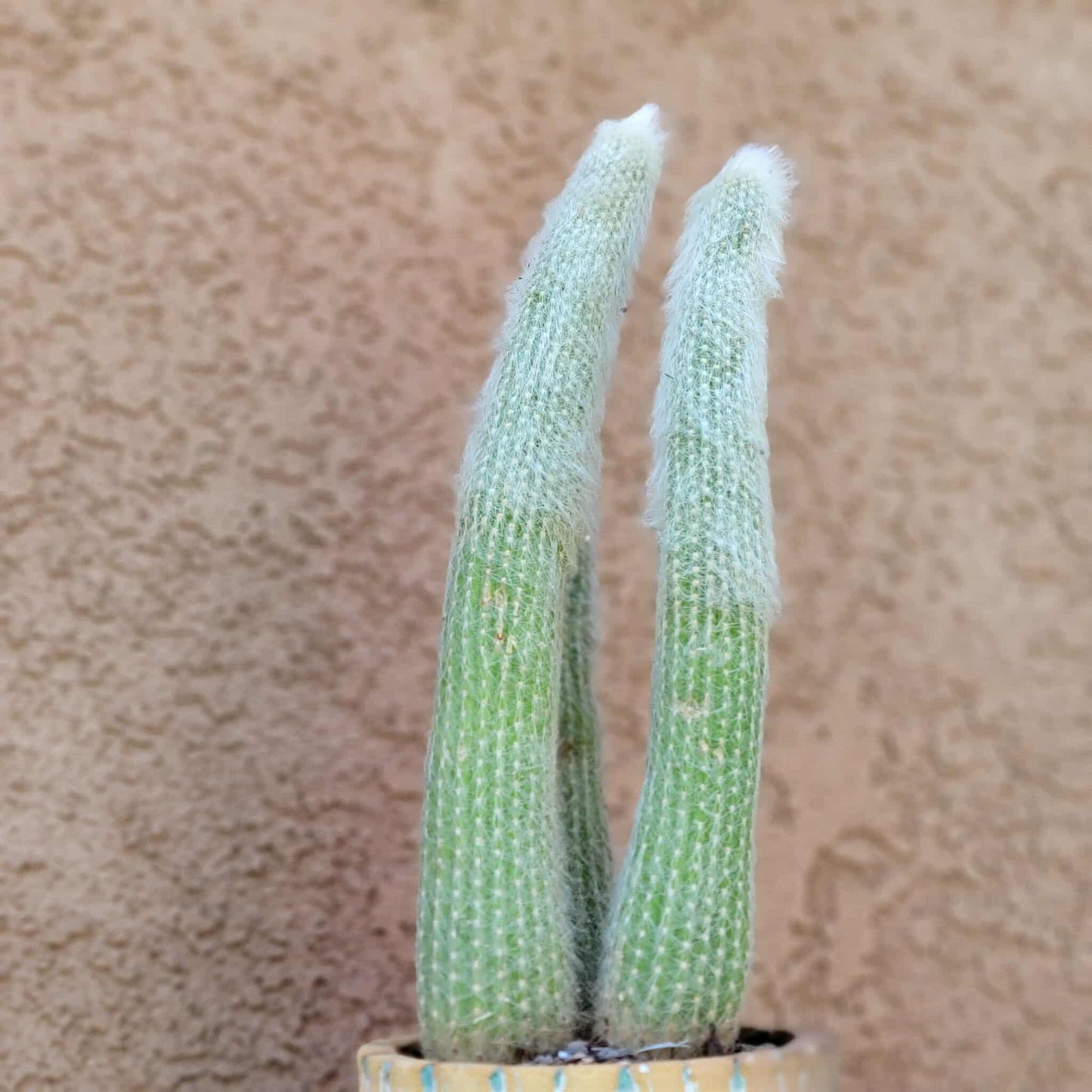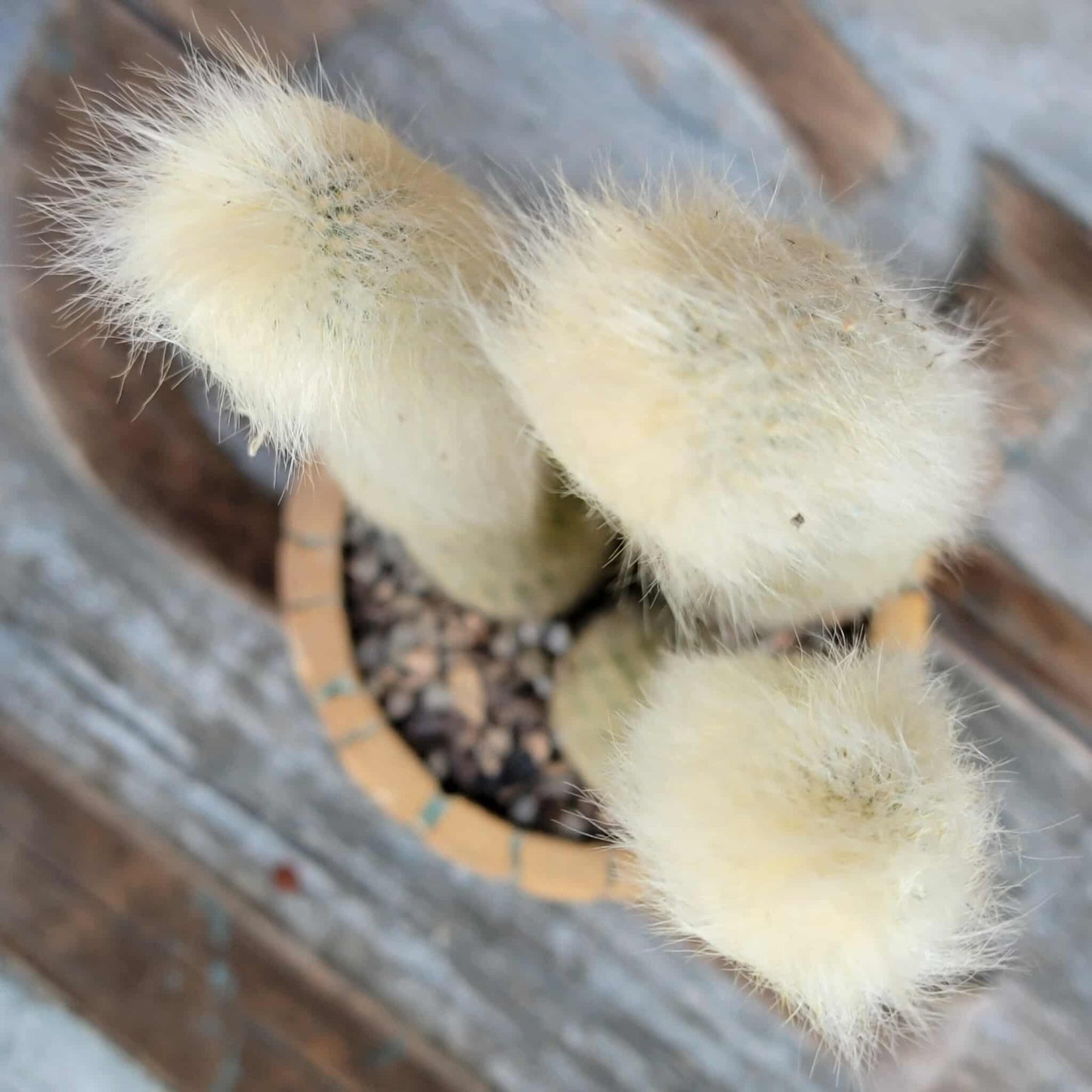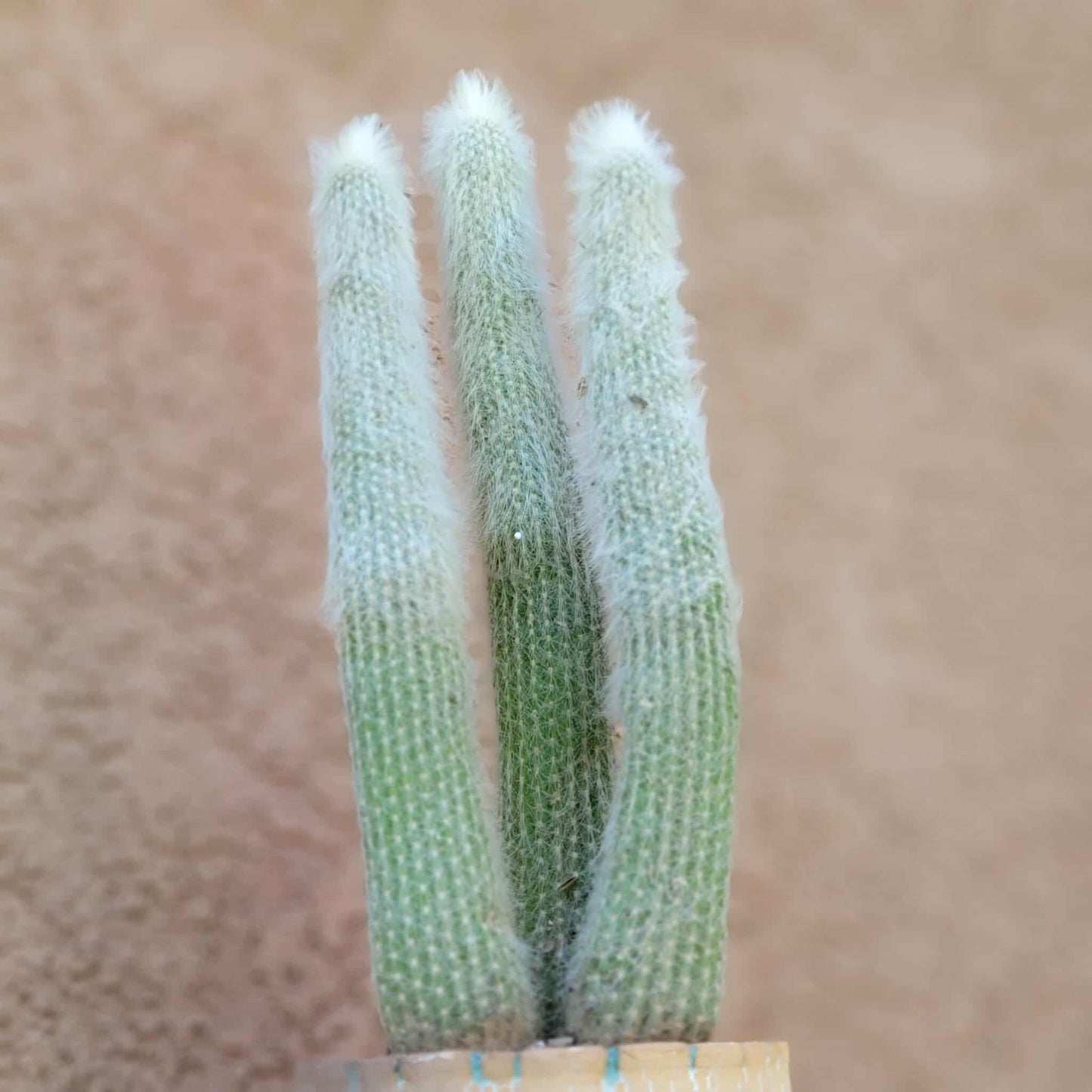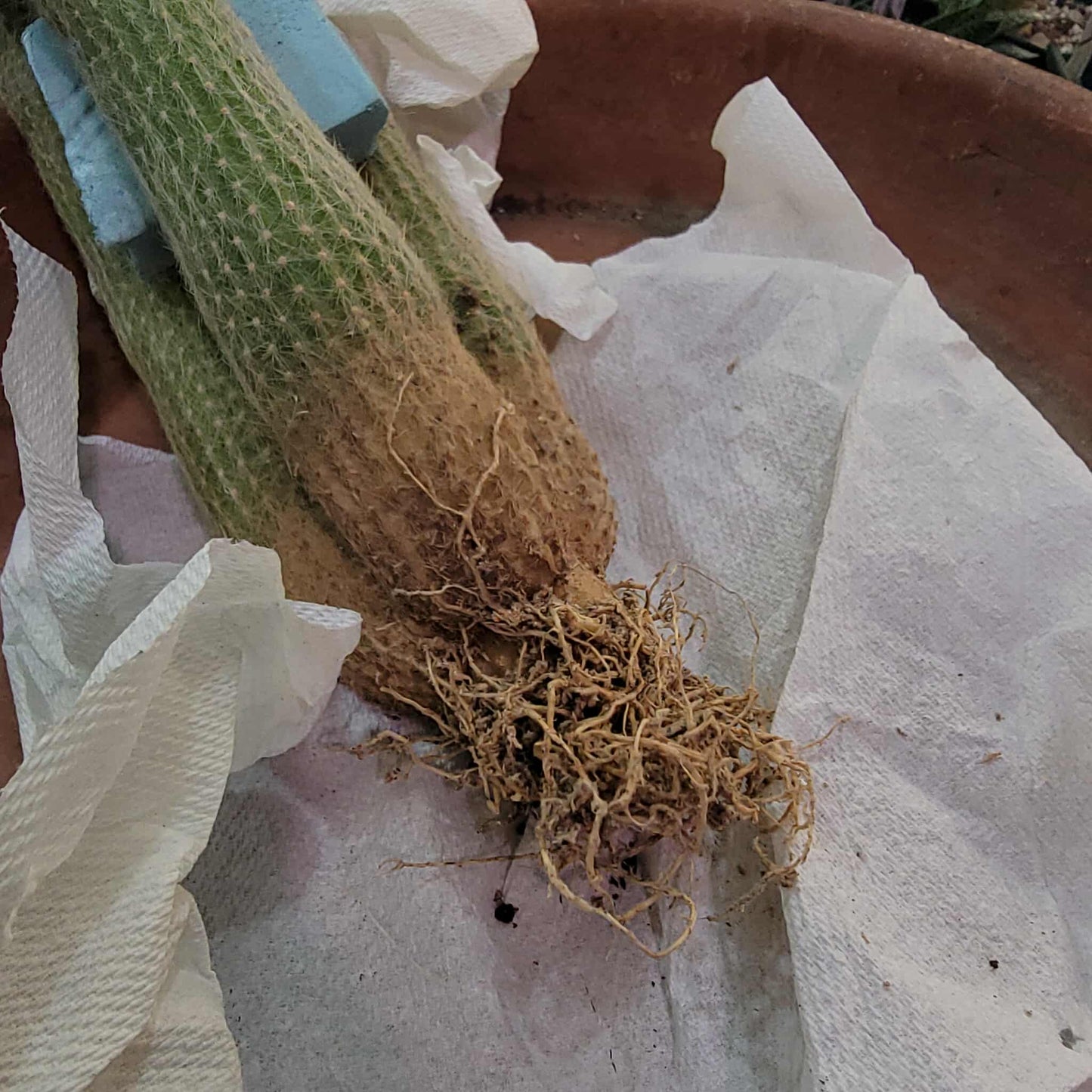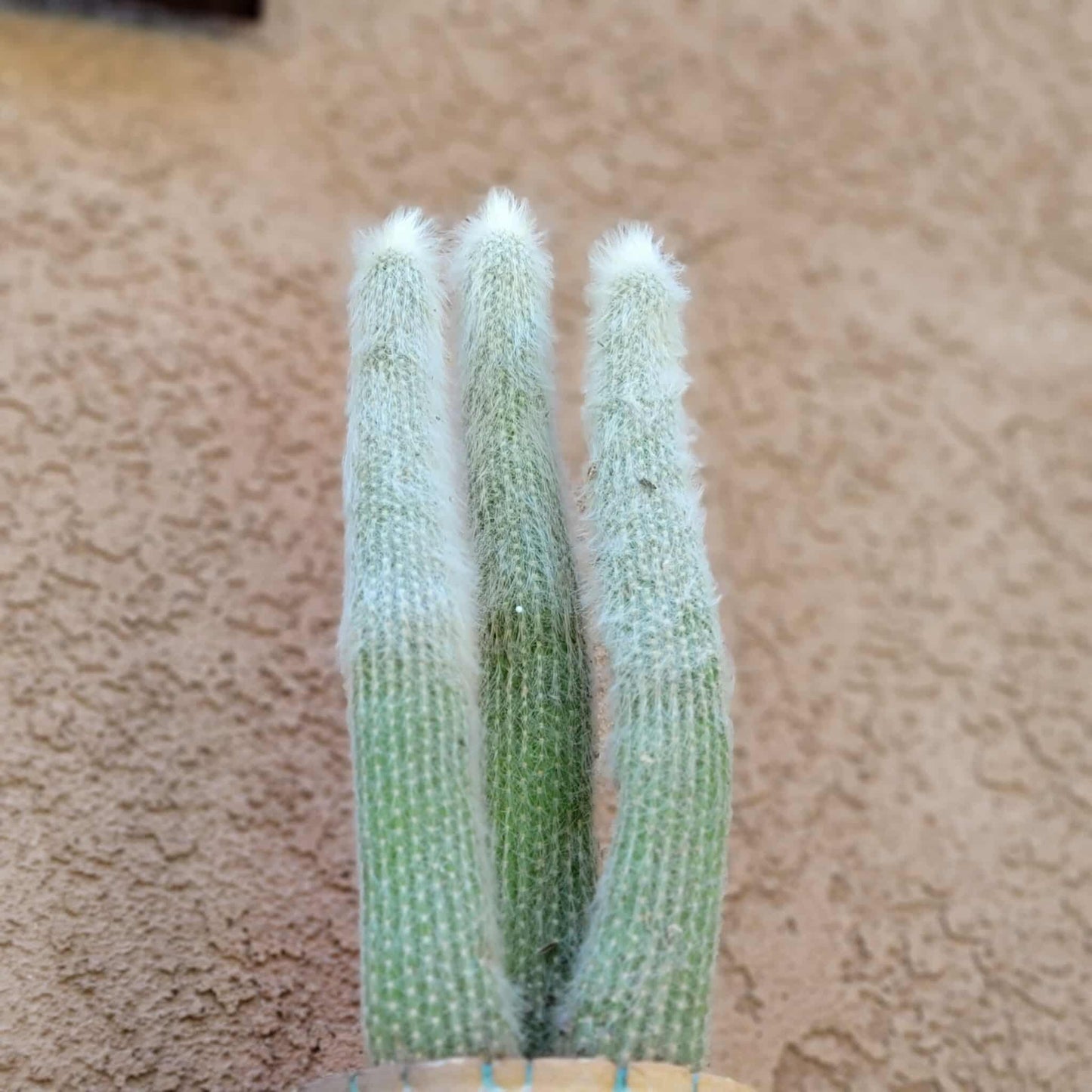Shangri-Ha Cactus Ranch
Cleistocactus strausii - 3 Arms
Cleistocactus strausii - 3 Arms
Couldn't load pickup availability
Cleistocactus strausii - 3 Arms
You will receive this exact, large specimen!
Features 3 arms, the tallest measuring 12” tall.
Roots as shown.
Showcased here in one-of-a-kind handmade pottery (sold separately).
Will be shipped bare root.
Cleistocactus strausii, also known as the silver torch cactus, is a slow-growing, columnar cactus prized for its striking appearance and low-maintenance care. Native to the high mountain regions of Bolivia and Argentina, it is covered in a dense layer of silvery-white bristles that help protect it from harsh sunlight. This makes it a popular choice for both indoor and outdoor cultivation.
Characteristics
- Appearance: This cactus has tall, upright, gray-green stems that can reach up to 10 feet tall in its natural habitat. The stems are covered in numerous ribs, with areoles that produce four longer yellow-brown spines surrounded by up to 40 shorter, white bristles, creating its signature "silver torch" look.
- Flowers: Mature plants (usually 10 to 15 years old) produce deep red or burgundy tubular flowers in the late spring or summer. The flowers emerge horizontally from the stems and famously never fully open, a trait reflected in the genus name Cleistocactus, from the Greek "kleistos" meaning "closed". These flowers attract hummingbirds.
- Growth habit: The plant typically forms multiple, upright columns by branching from its base. It grows at a slow to moderate rate.
- Resilience: It is highly drought-tolerant and can withstand colder temperatures than many other cacti, tolerating hard frosts down to 14°F (-10°C) for short periods, as long as it is kept dry.
Cultivation and Care
- Light: The silver torch cactus requires full sun to thrive and bloom. Indoors, a south-facing window is ideal. Insufficient light can cause thin, pale growth.
- Soil: Use a well-draining cactus and succulent potting mix to prevent root rot, which is the most common problem for this plant. Amend regular potting soil with sand and pumice to improve drainage.
- Watering: This cactus is drought-tolerant. During the spring and summer growing season, water moderately, allowing the soil to completely dry out between waterings. In the winter, reduce watering significantly, giving only enough to keep the cactus from shriveling.
- Temperature: This species prefers a cool, dry winter rest period. It does not tolerate excessive heat well.
- Fertilizing: Feed with a low-nitrogen fertilizer formulated for cacti and succulents once a month during the spring and summer growing season.
- Propagation: Can be propagated by stem cuttings. After taking a cutting, allow the cut end to dry and form a callous for a few days before planting. It can also be grown from seed, though germination can be erratic.
- Pests: The most common pests are mealybugs and spider mites, which can be treated with insecticidal soap.
Landscape and Display
- Cleistocactus strausii makes for a visually appealing landscape plant in dry or xeriscape gardens. Its columnar shape provides a great backdrop for other plants.
- For indoor growing, it is an excellent accent plant, especially when young. Its size makes it a dramatic patio container plant as it matures.
